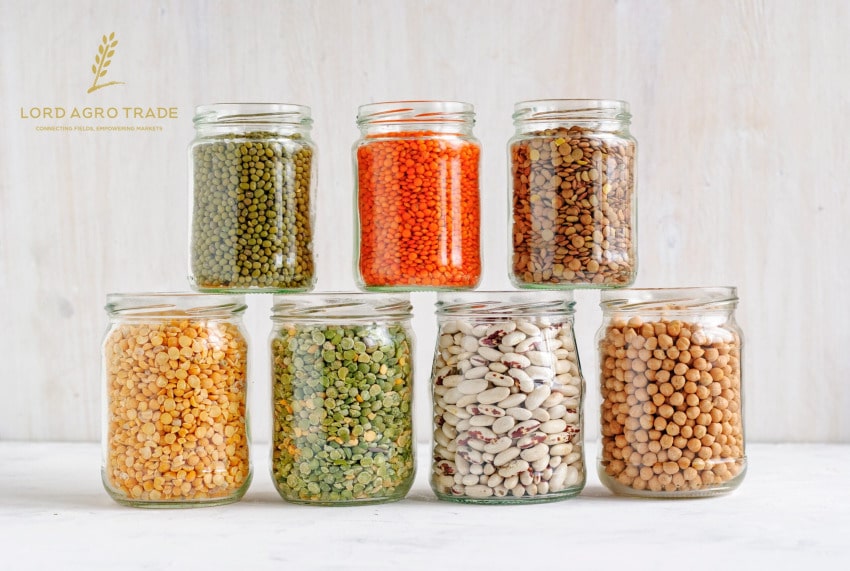Gulfood
17 To 21 FEB 2025 | DUBAI WORLD TRADE CENTRE
We’re excited to see you at Gulfood 2025!
Gulfood
17 To 21 FEB 2025 | DUBAI WORLD TRADE CENTRE
We’re excited to see you at Gulfood 2025!


Shut your eyes to the infinitely drying substances, and you are going to feel an endless warm summer breeze. The examples of totally dried pulses, regardless of the fact that they are a vital source of plant-based protein, are also a source of fiber, vitamins, & minerals. These superfoods are significant enough to bring the world into a sustainable lifestyle and spark the growth of the entire ecosystem.
A booming demand for Canadian pulses has fueled the growth of the industry in the last few years. The range of products from pink to the Middle East to chickpea curries of South Asia that emanates from it is beloved by people in many different dishes across the world. Canadian pulses are used in the cuisines of the world as they bring in nutritional content and, at the same time, enrich the flavor of diverse culinary traditions.

Canadian pulses are leguminous crops, that are harvested for their dry seeds, and they consist mainly of lentils, chickpeas, beans, and dry peas. These are foods with high nutritional value that are very elastic, and their health benefits have been known to people worldwide for many years now, in contrast to other legumes that are mainly made of soybeans and peanuts. Everywhere in the world, pulses are normally eaten in dry form, which gained its position as one of the staple foods in practically all cuisines worldwide. Traditionally and in modern days.
Canadian pulses are a nutritional giant when it comes to their actual food value. They are plant-based proteins, dietary fiber, and whole grains of complex carbohydrates. Thus, they are of great importance in the quality of food in the proper diet. The pattern is also used to give the body those which are necessary vitamins and minerals, like iron, magnesium, and potassium. These are the best companions for those who have diabetes and want to stay fit with a low glycemic index and low fat content.
Suggested article: Green lentils benefits + Nutritional value
Canadian pulses hanging out with their nutritional buddies have almost an equal benefit in terms of sustainable agriculture. As nitrogen-fixing crops, they give the soil the natural ability to regenerate, which results in very little use of chemical fertilizers. Additionally, pulses minimize the need for water input due to the fact that they are not as thirsty as most other crops, hence they are more sustainable as a choice for cultivation. The Canadian pulses’ energetic and dietary perks have made them not only key but also indispensable in the promotion of global food security and the adoption of sustainable farming practices.
One key advantage of Canadian agriculture is the use of digital technology and modern farming methods. Farmers in Canada use data analytics, GPS, and automated machinery to improve crop production, ensuring high-quality products. The rising demand for organic food and local products has led Canadian farmers to increase organic farming, use sustainable practices, and sell directly to consumers.
Canadian pulses are appreciated for their quality, shape retention, great taste, and high yield, meeting the needs of both domestic and international markets. The main types of legumes grown in Canada are dry peas, lentils, chickpeas, and beans.
Lentils are the most produced pulse in Canada, with green lentils being the most valued. These gray-green lentils are known for their excellent texture and taste. Canada, the largest producer of lentils worldwide, supplies these popular lentils, which hold a significant share in the global market.
Saskatchewan is an ideal province for agriculture, covering 50% of Canada’s farmland due to its flat terrain. Lentil farming is a major activity here, with Saskatchewan lentils being highly regarded for their quality. Many countries prefer Saskatchewan lentils over those from other regions like Alberta, making them more expensive.
Besides green lentils, Canada also produces other types like red lentils. The Canadian red lentil, known as King Red, is highly valued by food importers, especially in India. Despite being a major legume exporter, India imports various Canadian pulses due to their superior quality.
Lentils grow well in Canada’s semi-arid climate and have a short growing season, making them suitable for drought conditions. Canada is the largest exporter of lentils, even though India and Turkey also produce large quantities. Canada’s main competitors are Turkey, the U.S., and China.
All in all, Canadian pulses are popular worldwide because of their special qualities, and importers everywhere seek out Canadian pulses. For example, everyone knows about the great qualities of Canadian green lentils. Features of Canadian lentils, especially Saskatchewan lentils, which are known for importers, are high quality, large, and uniform seeds; a bright green color; clean and stone-free; no waste; retain appearance after cooking; cook quickly; and have a great taste.,
Can you explain how Canadian lentils are exported to international markets?
Canadian beans are exported to international markets through advanced logistics networks.
We suggest you visit this page to get the answer to your question:
https://lordagrotrade.com/markets/
Canadian lentils are exported through a well-structured supply chain. Most of the production comes from Saskatchewan, Alberta, and Manitoba. After harvesting, lentils are cleaned, graded, and processed in facilities that meet international quality and food safety standards. They are then shipped in whole containers or bags through Canadian rail networks to major ports such as Vancouver, or Montreal. From there, they are exported to key markets in Asia, the Middle East, and Europe and … Canada’s strong logistics, strict quality controls, and traceable supply chain make it one of the most reliable exporters of lentils worldwide.